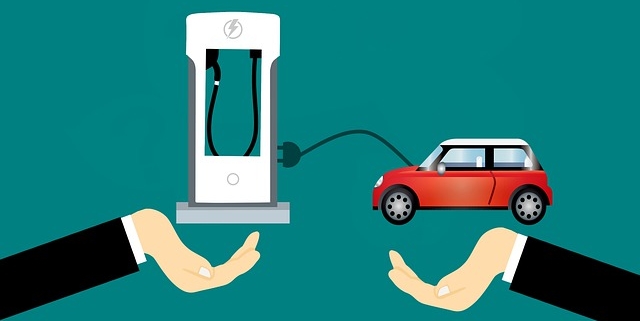That’s Shocking
The classic model of technology adopters outlined in Geoffrey A. Moore’s book, Crossing the Chasm, comprises the psychographic categories innovators, early adopters, early majority, late majority, and laggards. Based on an article in the July edition of Best’s Review — “Fires, Hacking Are Just 2 Hazards at Electric Vehicle Charging Stations” — perhaps two other psychographic categories should be added for drivers of EVs: pyromaniacs and masochists.
According to the article, the insurance risks — which include general liability, workers comp, and property (to say nothing of bodily injury) — may be the least of the risks potentially attributable to EV charging stations:
Electric vehicle charging station manufacturers will have a significant exposure. Charging station users could be injured by electrical shocks or by tripping over long cables; although highly unlikely, fires could erupt due to a malfunctioning charger. Fires could damage the charging vehicles and nearby property or injure bystanders. Chargers installed inside garages can ignite a home, and there is a possibility of liability if the fire spreads. Vehicles can be damaged by improper charging, possibly by consumers who fail to follow instructions or vehicle manufacturer recommendations.
None of us here has purchased an EV yet. But when we get them, we’re going to stock up on hot dogs and S’Mores, just in case.
Kidding Aside
Insurers are obviously in uncharted waters here. But some liabilities are evident at first blush:
- Electric shocks. At home or public charging stations, high voltages (110 to 240 volts) create vulnerabilities when plugging, unplugging, and handling cables. Beyond that, damage to cables and charging equipment from usage, cable wear, and weather increase the risk of shock. And public charging stations are vulnerable to theft of copper and other metals and minerals, along with exposed wiring.
- High-voltage fires related from lithium-ion batteries. Subject to damage from overheating, the flammable electrolyte liquid in lithium-ion batteries can cause high-voltage fireballs that burn at extremely high temperatures, release toxic gases, and are difficult to extinguish.
- Tripping on charging cables. This risk is self-evident and compounded by the numbers of users who may be trying to get in and out of public charging stations, especially at night.
- Cyber attacks. This risk might be the least expected. But since EVs rely on data, software, and sensors — including AI-assisted operating systems — cybersecurity becomes crucial to attacks from hackers and other bad actors, as well as data compromises and system outages. And if you’re using a public charging station, you’re upping the ante. You could be at bodily risk if hackers turn off lights, tamper with braking systems, or override steering capabilities.
The Good Old Days
Man has mounted science, and is now run away with. (Henry Brooks Adams, 1838-1918)
We’re not necessarily in a hurry to return to horses and buggies. But we have to admit, those were certainly more simple times with more obvious risks and fewer technologies to master. On the other hand, more of us live better lives than ever before. And wars notwithstanding, we’ve managed to come this far relatively unscathed.
We imagine requiring insurance to keep up is a small price to pay to pay for progress.




Leave a Reply
Want to join the discussion?Feel free to contribute!